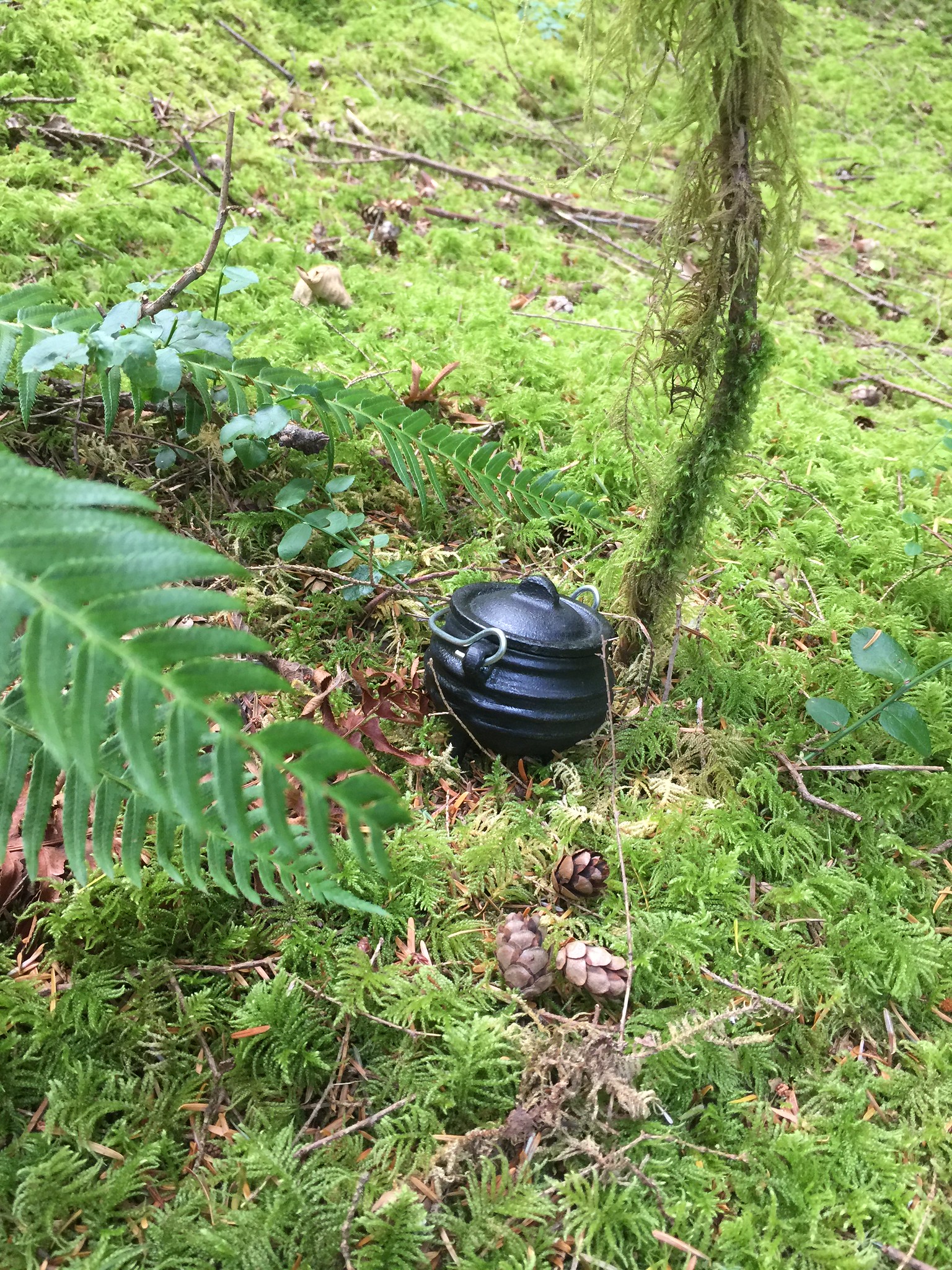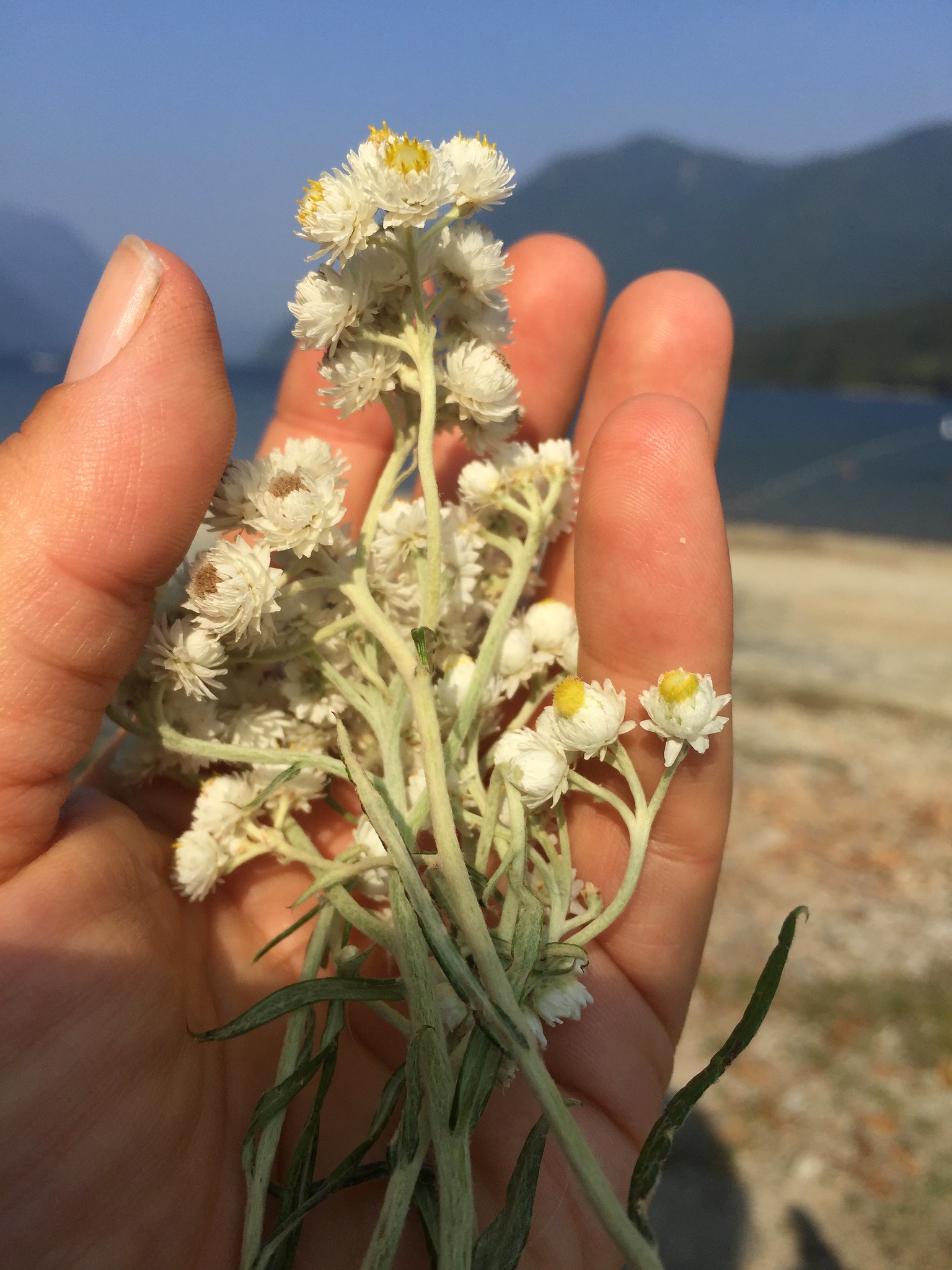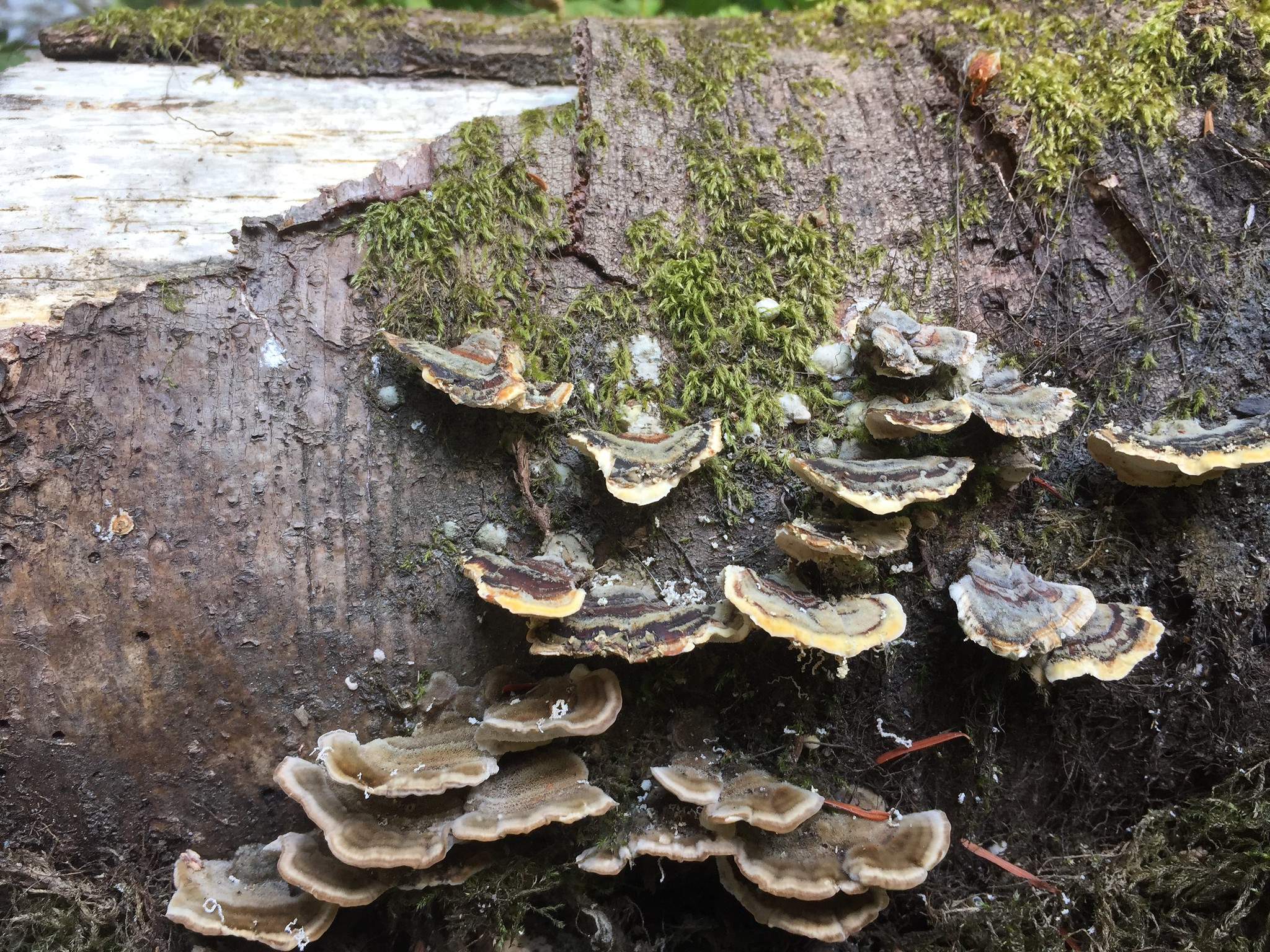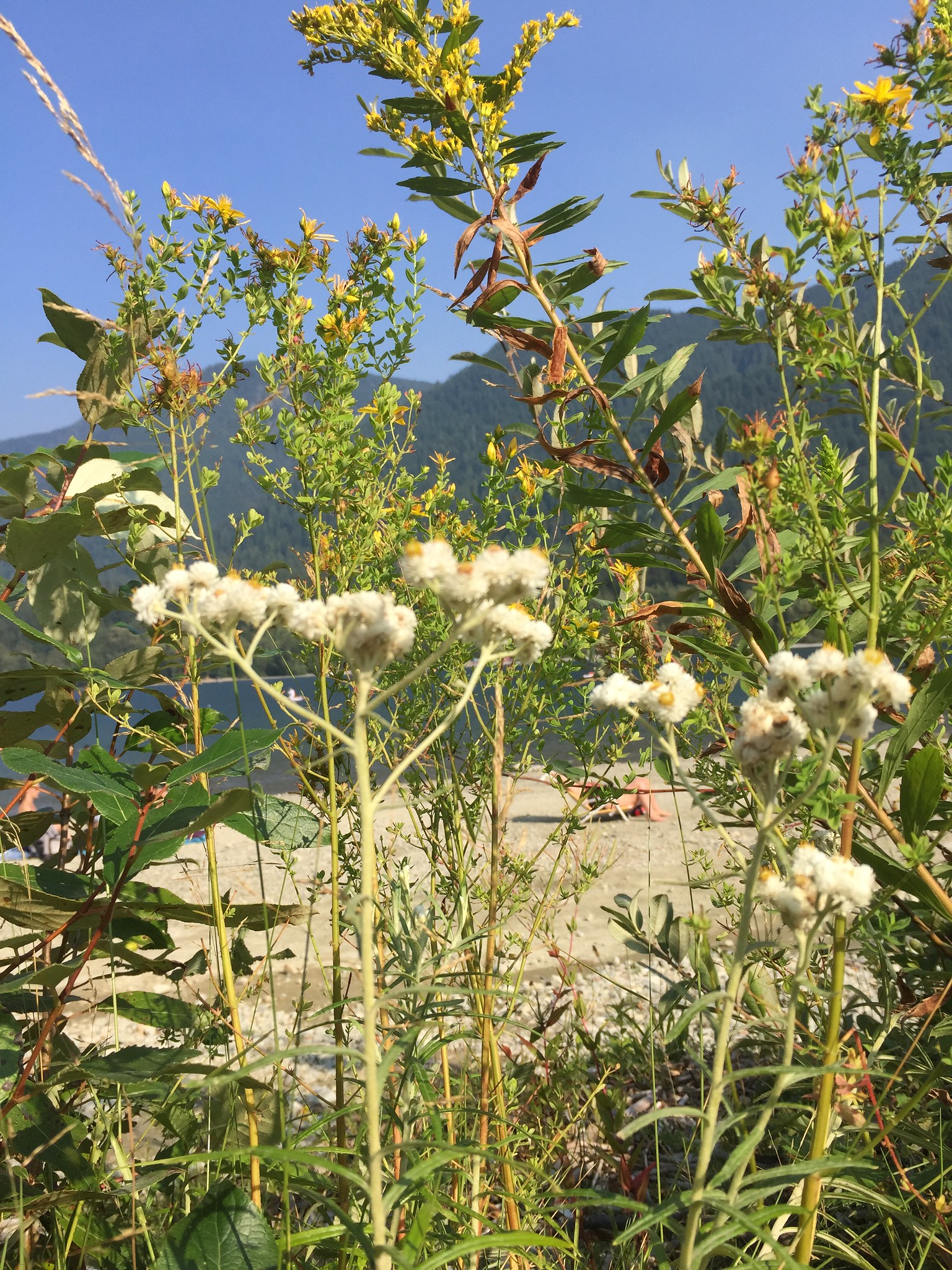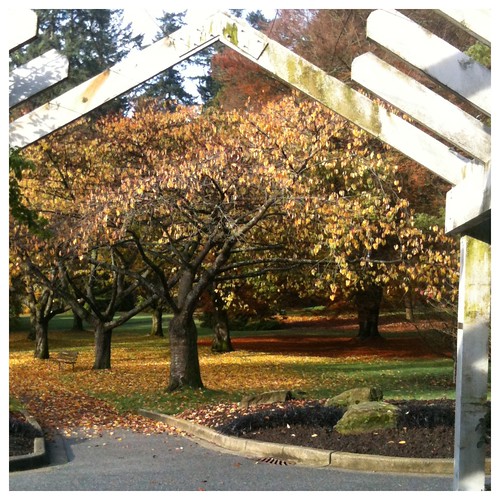Yesterday was a glorious golden autumn day. My morning walk on Coal Harbour seawall inevitably lead me to the Rose Garden in Stanley Park. Approaching the garden, I noticed two unusual things: the deep golden brown hues of the cherry trees just below the garden; and the unusual melding of the warm sweet scent of rotting fall leaves on the forest floor with the unexpected perfume of... Roses!
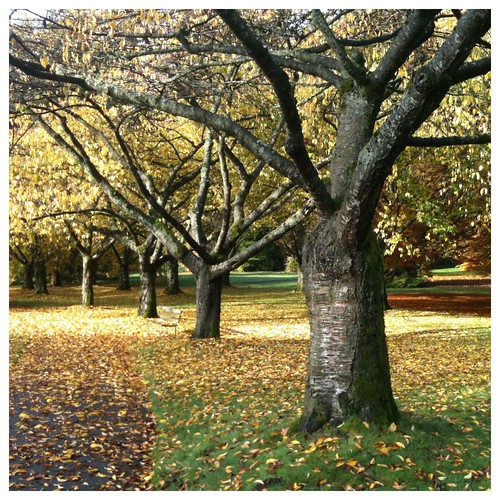
Yes, the roses were still in bloom, although it's already November. We had a dry and rather sunny weather halfway through October; and even now the weather is rather mild by comparison to season's average. There were still so many buds and flowers I could even see them from afar. And as I approached, they looked still rather colourful - little curled buds with bright glazed-flower-petals appearance. Yet, I noticed that although they were trying to open up, the deadly threads of fall have caught onto them with wetness and cold nights and spores in the air. Up close the buds just froze in mid blooming and are beginning to curl up in silky fibres of fungus and mold...
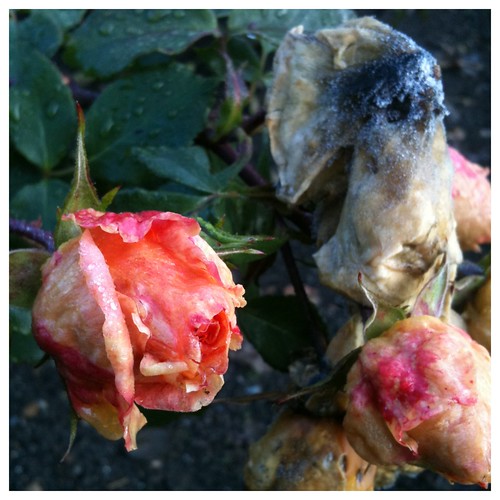
And down the lawns the mushrooms were having a little party, growing in groups of orangey-brown slimy caps crowded together as if whispering secrets of spores and the underground... Mushrooms are considered the Queen of the Dead with their ability to decompose and transform any dead being into rich compost. Their role in the ecosystem is invaluable, as they can break down many toxins that we careless humans pollute the planet with. A robot sent to the ruins of Chernobyl detected no life forms whatsoever; yet mushrooms were able to survive there, breaking down transforming the world's most toxic waste; and surviving. There is still very much to be learned about mushrooms' role in the universe, or how their
immensely mysterious intelligence operates (and this is a
translation of the article from Hebrew). Another fascinating video about the importance of the mycological world is
Paul Stamets: 6 ways mushrooms can save the world.This all makes me wonder sometimes - how little do we know about ourselves too? And our role in the bigger scheme of things? Maybe the mushrooms, with their immense network of underground threads are the rulers of the world, and they are just using us to carry their spores and transfer ideas around... And maybe the Western self-centered attitude is all wrong, and we should think of humanity as more of a fabric that should work and stretch and mend itself as one, rather than go in many erratic selfish directions that seem (insofar) to bring much misery and self-destruction to isolated individuals; perhaps this is just another illusion and we would be much better off giving up the sense of "self" to something more sustainable and positive?
But these are all big questions that I'm never going to be able to answer, not on a morning walk and not otherwise either. They do cross my mind, fine-tune my attitude, and bring inspirations which strangely finds its way to this blog - and stranger still - to perfume.
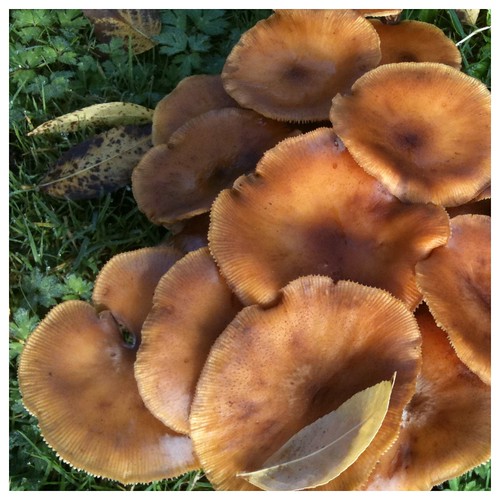
Mushrooms are fragrant. There is no doubt about it. Some more so than others. But there is an unmistakable scent to mushrooms and fungi - some more pleasant and perfume-inspiring than others. The supermarket variety range from pale and versatile button-mushrooms, which when fresh have that crisp scent not unlike a mild brie cheese. Other mushrooms have a far more earthy or even animalic scent, such as portobella mushrooms, or porcini. And than, of course, there are truffles! Pungent, unmistakable and precious truffles...
However - in perfume, there is very little use for mushroom as far as I have been able to gather. Forms of fungi are crucial in the process of fermentation, which is important for alcohol production. And alcohol has many uses in perfume: as a diluent or carrier; and also as a solvent for making tinctures and absolutes of various raw materials: animal essences such as ambergris, various seeds (ambrette), fruit (citrus zest) and herbs (deer's tongue). But aside from that - do mushroom every get used as a note in perfumery? Not so much...
Cèpes (Boletus edulis) or Porcini AbsoluteVariety of this absolute are quite two opposites: it can either smell like Marmite (a nutritional yeast spread that is popular in Greater Britain and Australia), hints of sour cocoa and bouillon cubes, which will inspire perhaps a wholesome brew of celery stalks, carrots and other hearty vegetables. I opt for the other type - those which smell richly chocolate-like, earthy and as nutty as pecans. Delicious through and through, and well balanced like a dish that has both savoury and sweet within it. This is hard to come across.
Perfume containing Cèpes are exclusively from the natural perfumers world:
Cèpes and Tuberose (Aftelier) Colette (JoAnne Bassett), the original smoky chocolate version of Guilt (Ayala Moriel), Oud Luban and Sepia (Aftelier), Oudh Laquer (Soivohle), Vetiver Racinettes (Ayala Moriel) and Schizm (Ayala Moriel). Cognac Absolute An indirect mushroom scent can be find in cognac absolute. Cognac requires yeast and fungi to ferment the grapes (most notably
botrytis), and from the sediments or lees, a cognac absolute is extracted. There are two varieties: green and white (frankly I don't find much difference between the two, but some claim the green is sweeter or fruitier). Either way, it has that boozy, fermented grape odour that is not easy to get away with and turn to your side (from a perfumer's point of view). Just like a cocktail - it's best cut down with a lot of citrus and green note.
Perfumes containing cognac as a prominent note:
7 Sinful Scents: Sloth (Gendarme) Aramis Cool (Aramis), Arsenal and (Ayala Moriel),
Botrytis (Ginestet), Cognac (Aftelier), Colette (JoAnne Bassett), Gaucho (Ayala Moriel), Michael Jordan, and the recently launched with the worst commercial ever (until No. 5 with Brad Pitt came along) - Encounter (Calvin Klein).
OudIs not strictly a "mushroom" note, but the essence forms only as a response to various bacteria and
fungi that attack several species of tropical trees in the jungles of Laos, Cambodia and Vietnam. Some trees are also cultivated in Assam region in India. Ouds scents are very varied, and some are more musty and fungus like than others; while some are intensely dark and animalic, or even containing raspberry-like sweet undertones. Oud has been a dominant presence in the past 3 years "niche" offering, spilling out to many semi-mainstream scents. Without any ambitions to list all oud fragrances, or all remarkable oud fragrances, I'll just mention a few that I find significant for either historic reasons or because they are well made or all natural:
The Montale oud line, which preceded the trend by many years, as did M7 (Yves Saint Laurent). Skipping forward - the very recent collections of Oud Stars and Keiko Mecheri's Bespoke both pretty much sum up the oud trend.
And from the all-natural ouds: Reflections Parfum (JoAnne Bassett), Oud Luban and Sepia (Aftelier), Oudh Laquer (Soivohle), Rose Boheme (Providence Perfume), Temple (Anay's Garden); and Razala, Song of Songs, Megumi and Bon Zai (Ayala Moriel Parfums).
3-OctanolA natural isolate whose odour is reminiscent of fungi and mushrooms, with spicy hints of gasoline, and waxy, creamy dairy-like nuances. The sharpness in it is not unlike truffles.
TuberoseMost tuberose absolutes have a green, waxy, creamy nuances that are reminiscent of mushrooms and fungi. Very few perfumes play on that aspect though, and prefer to amp up the orange-blossom like qualities of tuberose (with added methyl anthranilate).
TruffleThe culinary gold of only rare times of the year when a few shavings would cost you as much as a whole week's grocery list. These underground fungi are scouted by female pigs, who can identify the scent as it contains pheromones identical to that of the male pig. The scent is sharp, ripe, somewhat fruity, mineral and very hard to describe otherwise. There are two main varieties - white truffle, which grows in winter which is sharper-smelling, almost peppery and like over-fermented cheese; and black summer truffle which is fruitier, more deep and smooth and full-bodied (considered inferior or at least not as expensive, but is my personal favourite). Unfortunately, the aroma of neither black nor white truffle yields well to distillation, tincturing or oil infusion. As much as they'd like us to believe, "truffle oil" is simply olive oil (or other cheaper vegetable oils)
"infused" with 2,4-dithiapentane and perhaps some other
lab-made organic compounds that are responsible for the truffle's sought-after aroma.
Therefore, as you've guessed, perfumes with "truffle" note must be containing synthetics. Examples:
Black Orcid (Tom Ford), Cumming (Alan Cumming), Exotic (Boadicea the Victorious), L.I.L.Y. (Stella McCartney),Oxford Street (Hugh Parsons), Une Rose (Frederic Malle) and Valentina (Valentino). Most of these are quite recent creations - so it could become a trend... Mark my word and watch for yourself - but you've seen it here first!

We have now pretty much exhausted the supplies of natural mushroom notes in perfumery. But there are several perfumes of interest that feature a mushroom or a mushroom-like note - be it natural or synthetic. And in these coming weeks I will be writing my impressions of some of my favourites among them - or the ones I just find intriguing enough to inspire a post!
